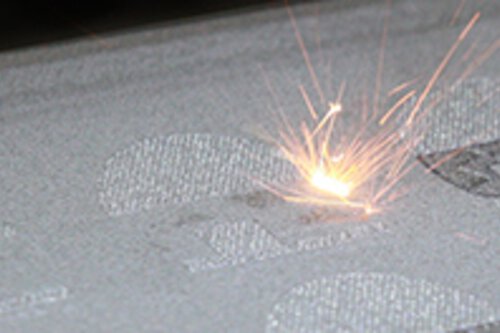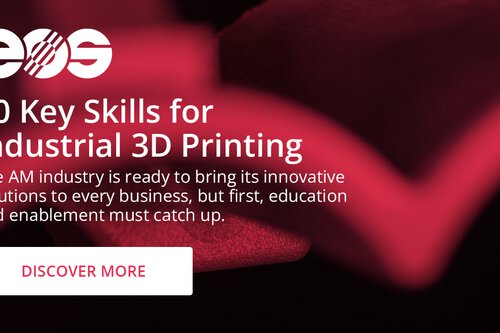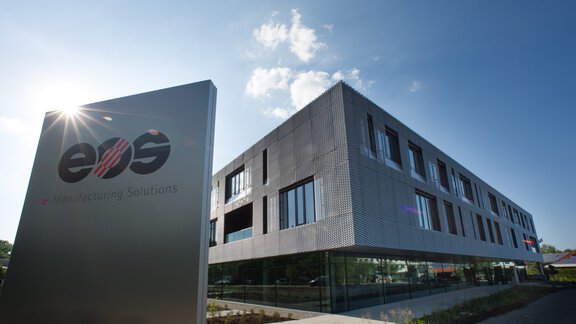Understanding the Steps of 'Start to Part' with Polymer Additive Manufacturing
Polymer additive manufacturing (AM) is an exciting and new avenue for many businesses when it comes to the production and manufacturing of applications or parts. There are many overarching benefits of leveraging AM within your production lines, but finding which benefits are most important to your application and overall goals of adding industrial 3D printing to your business portfolio is crucial to maximizing AM business success.
When starting out in additive manufacturing, specifically with polymers, it is important to ask yourself and your organization a few initial questions to fully understand the production and business case goals:
- Why are you considering industrial 3D printing? What are you hoping AM brings to the table for your business?
- What application(s) are you interested in 3D printing and why?
- What application benefits are you looking to leverage with additive manufacturing? Are you focused on adding customization to your production portfolio, reducing cost-per-part, and/or minimizing lead time?
Answering these questions within your organization before embarking on an AM journey can help with narrowing your focus and goals for the application. Industrial 3D printing and scaling with AM can be confusing to those unfamiliar with the process, but by understanding the steps between introducing 3D printing and owning a part production line, you can feel confident to set your business up for success.
The first step: Connecting with an Additive Minds consulting team member and selecting an EOS system
Talking to an Additive Minds consulting team member and selecting the right EOS polymer system for your business is crucial to laying the foundation for your future AM production. The initial consultation phase allows the Additive Minds team to understand the application features, material properties, and production goals you are looking to achieve with industrial 3D printing. The system’s build volume (size) also gives more color to the overall picture of your AM journey and production capabilities. Not all applications are meant to be 3D printed or make a successful business case using additive, so our consultation team will analyze if this is the right manufacturing solution for you.
Insider tip from the EOS polymer team - Be open to the possibility that the application you selected for 3D printing may not serve as the strongest business case for AM. Allowing Additive Minds to review your application portfolio with an open mind allows for the largest return on investment for your organization and may open more cost-per-part reduction than you originally predicted.
Step 2: Collaborating with the EOS applications team to refine your application design and parameters
Once you have set your production and application goals with the consulting team, you are now introduced to the applications group. This engineering group is dedicated to the details, or as they say, the last 20% of your application design. The EOS applications team analyzes how many parts will fit in a build volume, the ideal material options based on your desired performance goals, and the optimal surface finish for your application.
Step 3: Benchmarking your application
Benchmarking refers to the “practice prints” of your application. These are performed to confirm the desired specifications of your application and highlight the differences and benefits of leveraging AM over the legacy manufacturing strategy that was previously used to produce your part. For example, many customers select an AM material family before beginning the application journey, only to find that another material may provide better performance benefits or reduce cost-per-part because of material properties. During this stage, a customer can also choose to design their own material with Advanced Laser Materials (ALM), a sister organization of EOS specialized in polymer material with over 20 proven and tested polymer materials available.
Insider tip from the EOS polymer team – keep an open mind with polymer materials when selecting the right one for your application. Although the choices seem limited from an outsider’s perspective, the ability to design your own material and prioritize material properties for the best part performance is giving AM applications a previously unattainable advantage to those using traditional polymers.
Step 4: Confirming material selection and surface finish requirements
Once you have finalized your material selection, it is time to finalize post-processing and surface finish requirements. Post-processing is often overlooked in the 3D printing journey, especially for those unfamiliar with the practice. Post-processing allows for smoothing and dyeing of applications, giving them the polished look many businesses provide with their applications. Once both processes are confirmed, the design file and production parameters are set.
The last step: Deciding your long-term goals and how to continue AM in your production line
Once your application is ready for 3D printing production, there are a few paths available to your business on how to move forward. If you are bringing AM production in house, it is time to begin educating your internal engineering team on how to leverage additive manufacturing in the future. The EOS Additive Minds Academy is a great resource to internal teams, allowing organizations to participate in AM education at their own pace.
If your organization is not ready to take on AM alone, beginning an AM Turnkey solution is another avenue that allows businesses to leverage AM without necessarily producing parts in house. AM Turnkey is simple – you purchase a system, but the system never leaves the EOS shop floor. Instead, it rents space in the EOS Austin facility, where our team of engineers runs and manages the system’s production. This allows for a more gradual adoption of AM and peace of mind that those who know the technology best are managing it in the beginning.
Insider tip from the EOS polymer team – if your organization is in the waiting period before your system is delivered and set up in your production house but after you have finalized the application design, begin the AM Academy courses and work through as many as possible before the system arrives. This allows for your internal engineering team to feel prepared and set up for success before even interacting with your new AM system.
Overall, beginning and moving through the AM journey can be confusing, but it does not have to be. With the help of consulting, AM experts, and AM educational tools your team can be well-versed in additive before they begin their first build. Preparing, understanding, and leveraging AM can only create more opportunities and benefits for your business and engineering team.
Interested in getting started with polymer 3D printing? Reach out to the Additive Minds Academy team today to chat with a consultant about your 3D printing goals.

Find the 3D printing solution that best fits your manufacturing needs.
Learn More
The AM industry is ready to bring its innovative solutions to every business, but first, education and enablement must catch up.
DISCOVER MORE
